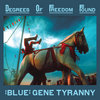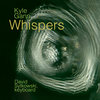AGAMEMNON by David Avidor and Nicole V. Gagné
Tracklist
| 1. | Prologue: Thyestes | 5:43 |
| 2. | Act 1: Choral Ode 1 | 4:18 |
| 3. | Chorus 1 and Clytemnestra | 8:22 |
| 4. | Act 2: Choral Ode 2 | 2:52 |
| 5. | Chorus 2 and Herald | 10:55 |
| 6. | Clytemnestra, Herald and Chorus 2 | 10:17 |
| 7. | Act 3: Choral Ode 3 | 1:07 |
| 8. | Chorus 3 | 1:53 |
| 9. | Agamemnon and Clytemnestra | 17:31 |
| 10. | Act 4: Choral Ode 4 | 1:09 |
| 11. | Clytemnestra and Chorus 4 | 4:49 |
| 12. | Cassandra and Chorus 4 | 21:44 |
| 13. | Death of Agamemnon | 2:21 |
| 14. | Act 5: Chorus 5 and Clytemnestra | 18:15 |
| 15. | Aegisthus, Chorus 5 and Clytemnestra | 6:39 |
Credits
released September 26, 2012
Some Notes On AGAMEMNON
by Nicole V. Gagné
The Music
David Avidor and I created AGAMEMNON to be an opera specifically for disk rather than live performance. All the musicians were recorded individually, from December of 1986 through December 1988. The vocalists were given only the text of their own character’s lines and recorded their tracks without hearing the music of any other players. Two exceptions to this procedure are also the longest parts in the opera: the Herald, which Phil Minton and Roger Turner performed together, and Clytemnestra, who is always attended by two musicians of changing instrumentation. The only other departure is Thyestes, which is a live take, heard as played with no edits or overdubs (other than some backwards reverb at the beginning and end).
Of the sixteen performers who joined David and me in AGAMEMNON, fourteen worked as studio musicians in a series of free-ranging improvisations, knowing that David and I would re-cut their tracks and combine them with other singers and instrumentalists. Two musicians, however, created what were in effect discreet independent songs: Fred Frith with “Choral Ode 2” and “Blue” Gene Tyranny with “Choral Ode 3.” In both instances, they are the composers of those works.
The Libretto
Not being literate in ancient Greek, I wrote the libretto of AGAMEMNON after studying numerous English translations of Aeschylus (principally those by Richard Lattimore, Tony Harrison, Herbert Weir Smyth & Hugh Lloyd-Jones, and Robert Fagles). The actual words being sung, however, are all taken from a late-16th-century text by the English poet John Studley: his translation of Seneca’s play Agamemnon, which was written in Latin by the Roman tragedian and philosopher sometime during the middle third of the 1st century C.E. -- about 500 years after Aeschylus’s tragedy was first performed.
Although today neglected by both the stage and the academy, Senecan tragedy actually possesses considerable virtues and was wildly admired throughout the Renaissance, when Greek tragedy was still largely unknown. Seneca’s lurid violence, bombastic rhetoric, and despairing tone spoke directly to the writers of Elizabethan tragedy, in the original Latin as well as in translation. Studley’s Agamemnon appeared in 1581 along with nine other Senecan tragedies “faythfully englished” by various scholarly poets. (Aeschylus would remain unenglished until 1777.) For my libretto, I used Studley’s text strictly as a lexicon of words from which I could re-create the characterizations, narrative structure, thematic arguments, and poetic imagery of Aeschylus’s Agamemnon. A further constraint was that the libretto’s Clytemnestra had to be stitched together from the words spoken by Seneca/Studley’s Clytemnestra; the libretto’s Aegisthus, from that text’s Aegisthus, and so on. (A 72-line epilogue, “added to the Tragedy by the Translator,” was treated as a pool of words available for any character.)
Seneca and Aeschylus are playwrights of drastically different attitudes and methods, and their versions of the Agamemnon story vary greatly. My focus in writing the libretto was of course Aeschylus, but certain Senecan innovations proved irresistible -- particularly his conception of Aegisthus as the spawn of Thyestes’ incestuous coupling with his own daughter. The Prologue, however, is the libretto’s only radical departure from Aeschylus. His Agamemnon begins with a monologue by the Watchman who awaits his master’s return; the libretto adopts Seneca’s opener, a tirade from the ghost of Thyestes, who is Agamemnon’s uncle and his immediate link in a bloody chain of generational violence and revenge. Nevertheless, images and ideas peculiar to Aeschylus’s Watchman are woven into Thyestes’ song.
My libretto for AGAMEMNON was designed to make the opera reverberate through a superimposition of historical eras: the contemporary treatment of form; the language of Christian, Tudor England; the bleakness of the Roman courts of Caligula and Nero; the visionary passion of 5th-century B.C.E. Athens.
Some Notes On AGAMEMNON
by Nicole V. Gagné
The Music
David Avidor and I created AGAMEMNON to be an opera specifically for disk rather than live performance. All the musicians were recorded individually, from December of 1986 through December 1988. The vocalists were given only the text of their own character’s lines and recorded their tracks without hearing the music of any other players. Two exceptions to this procedure are also the longest parts in the opera: the Herald, which Phil Minton and Roger Turner performed together, and Clytemnestra, who is always attended by two musicians of changing instrumentation. The only other departure is Thyestes, which is a live take, heard as played with no edits or overdubs (other than some backwards reverb at the beginning and end).
Of the sixteen performers who joined David and me in AGAMEMNON, fourteen worked as studio musicians in a series of free-ranging improvisations, knowing that David and I would re-cut their tracks and combine them with other singers and instrumentalists. Two musicians, however, created what were in effect discreet independent songs: Fred Frith with “Choral Ode 2” and “Blue” Gene Tyranny with “Choral Ode 3.” In both instances, they are the composers of those works.
The Libretto
Not being literate in ancient Greek, I wrote the libretto of AGAMEMNON after studying numerous English translations of Aeschylus (principally those by Richard Lattimore, Tony Harrison, Herbert Weir Smyth & Hugh Lloyd-Jones, and Robert Fagles). The actual words being sung, however, are all taken from a late-16th-century text by the English poet John Studley: his translation of Seneca’s play Agamemnon, which was written in Latin by the Roman tragedian and philosopher sometime during the middle third of the 1st century C.E. -- about 500 years after Aeschylus’s tragedy was first performed.
Although today neglected by both the stage and the academy, Senecan tragedy actually possesses considerable virtues and was wildly admired throughout the Renaissance, when Greek tragedy was still largely unknown. Seneca’s lurid violence, bombastic rhetoric, and despairing tone spoke directly to the writers of Elizabethan tragedy, in the original Latin as well as in translation. Studley’s Agamemnon appeared in 1581 along with nine other Senecan tragedies “faythfully englished” by various scholarly poets. (Aeschylus would remain unenglished until 1777.) For my libretto, I used Studley’s text strictly as a lexicon of words from which I could re-create the characterizations, narrative structure, thematic arguments, and poetic imagery of Aeschylus’s Agamemnon. A further constraint was that the libretto’s Clytemnestra had to be stitched together from the words spoken by Seneca/Studley’s Clytemnestra; the libretto’s Aegisthus, from that text’s Aegisthus, and so on. (A 72-line epilogue, “added to the Tragedy by the Translator,” was treated as a pool of words available for any character.)
Seneca and Aeschylus are playwrights of drastically different attitudes and methods, and their versions of the Agamemnon story vary greatly. My focus in writing the libretto was of course Aeschylus, but certain Senecan innovations proved irresistible -- particularly his conception of Aegisthus as the spawn of Thyestes’ incestuous coupling with his own daughter. The Prologue, however, is the libretto’s only radical departure from Aeschylus. His Agamemnon begins with a monologue by the Watchman who awaits his master’s return; the libretto adopts Seneca’s opener, a tirade from the ghost of Thyestes, who is Agamemnon’s uncle and his immediate link in a bloody chain of generational violence and revenge. Nevertheless, images and ideas peculiar to Aeschylus’s Watchman are woven into Thyestes’ song.
My libretto for AGAMEMNON was designed to make the opera reverberate through a superimposition of historical eras: the contemporary treatment of form; the language of Christian, Tudor England; the bleakness of the Roman courts of Caligula and Nero; the visionary passion of 5th-century B.C.E. Athens.
License
All rights reserved.Tags
Recommendations
 Degrees Of Freedom Found
Degrees Of Freedom Foundby "Blue" Gene Tyranny
 Pulse Music
Pulse Musicby John McGuire
 Electronic Music from 1972-2022
Electronic Music from 1972-2022by Carl Stone
 Re:Visions (Music Inspired By The 3 Doors/The 3 Dense Planes)
Re:Visions (Music Inspired By The 3 Doors/The 3 Dense Planes)by Alex Asher Daniel
 Every Rock, Every Half-Truth Under Reason
Every Rock, Every Half-Truth Under Reasonby Kayo Dot
 COLYALCOLOR
COLYALCOLORby Francisco Morato, John Dikeman, Julien Tassin, Hugo Costa, Aleksandar Škorić
 Whispers
Whispersby Kyle Gann
